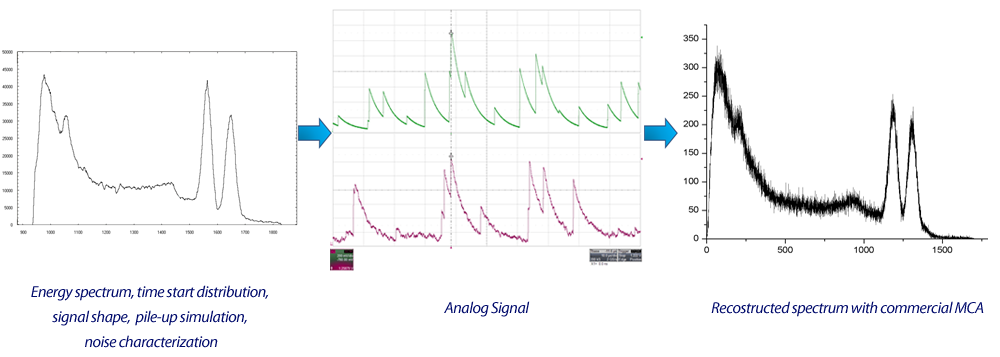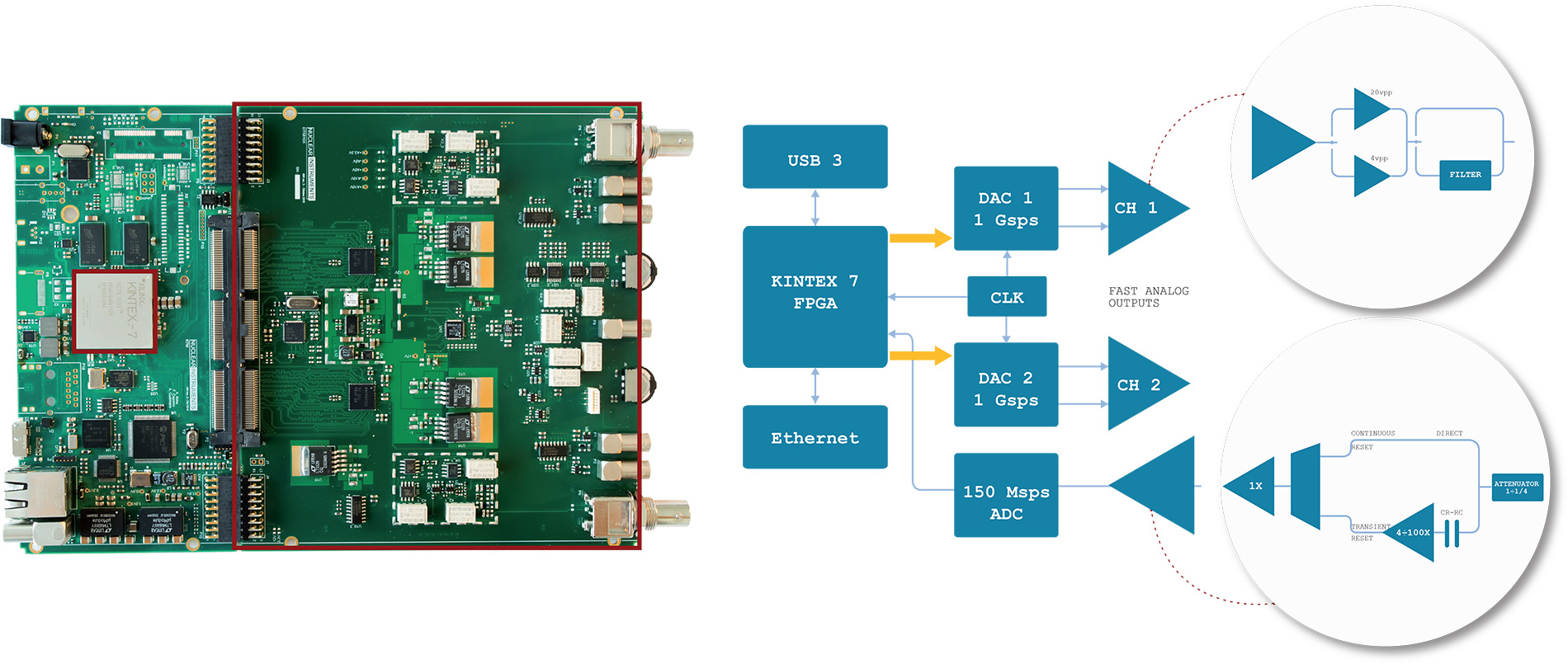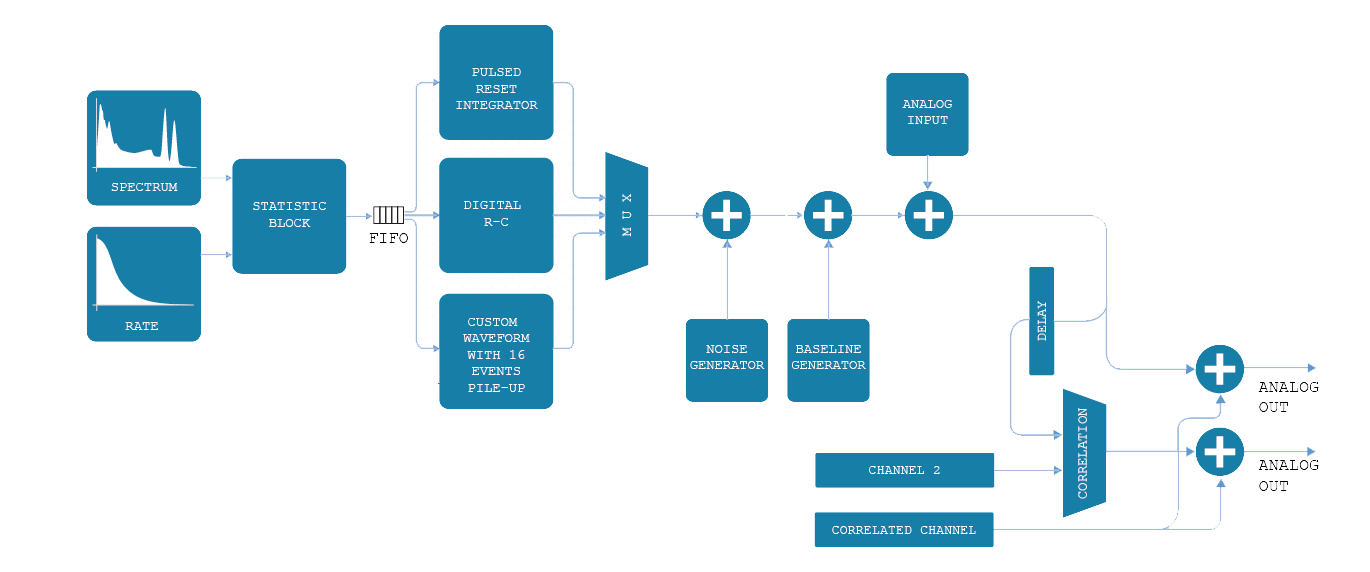
Digital Detector Emulator
Overview
The key feature of this instrument is its ability to generate analog signals in real time, based on programmable physical characteristics and statistical models for time and energy distribution. Unlike playback systems, this emulator doesn’t reproduce recorded data — it creates signals dynamically.
Thanks to real-time generation, the Digital Detector Emulator can replicate complex physical behaviors such as Poisson-distributed arrival times, energy spectra, signal correlations between two outputs, and various types of noise. It can simulate pile-up effects and baseline drift over time using a customizable profile. Both white noise and 1/f noise, along with other disturbances, can be accurately emulated. The output features a rise time under 1 ns, and the system can produce correlated pulses with 1 ns time resolution between them.
Inside the Hardware

At the core of the DT5810 is its high-speed hardware: two 1 GSPS, 16-bit DACs and a wideband analog front-end, enabling pulse generation with sub-nanosecond rise times.
A Kintex-7 FPGA handles the emulation logic. The system provides two analog outputs:
- One optimized for speed (1 ns rise time, 4 Vpp)
- One optimized for signal amplitude (30 ns rise time, 18 Vpp)
An internal 14-bit, 125 MSPS ADC with a programmable input range (10 V, 5 V, 2.5 V, 1.25 V) allows signal monitoring and feedback.
Inside the Firmware

The firmware uses statistical models to generate pseudo-random events with realistic energy, timing, and pulse shape distributions.
- Energy spectrum defines pulse amplitudes
- Time distribution defines the spacing between events
- Pulse shape defines the waveform used
All events are generated in real time by the onboard FPGA, which can perform billions of operations per second. The resulting digital stream is converted to analog using two high-resolution DACs.
The instrument also includes 128 MB of RAM to store:
- Custom waveform sequences
- Arbitrary waveform generator (AWG) samples
Signal Generation Modes
The signal shape can be created in two ways:
-
Digital integrator
Produces exponential pulses with adjustable rise and decay times. Supports unlimited pile-up. -
Memory-based
Uses up to 16 programmable waveforms for controlled pile-up. When a trigger is received, the corresponding memory is read and its output added to the total signal.
Both methods allow simultaneous shape emulation on the same output, useful for testing pulse shape discrimination algorithms.
Noise & Drift Simulation
The system can simulate multiple noise sources:
- White noise
- 1/f noise (tunable in frequency and amplitude)
- Random walk
- Periodic noise (e.g. from switching power supplies), with adjustable jitter and amplitude
It also simulates baseline drift over long time windows (up to 1 s), using programmable drift profiles and interpolation.
All these elements — pulses, pile-up, noise, drift — can be combined to generate highly realistic analog signals for system testing, development, and calibration.
Energy Spectrum Emulation
In emulating a radioactive source, a primary task is to generate the energy values following a user-defined energy spectrum. The maximum flexibility is given by a PC equipped with a software that allows the user to directly draw the spectrum, and upload it to the simulator circuit. The algorithm converts a white distribution in a digital stream of data in according with the programmed spectrum.